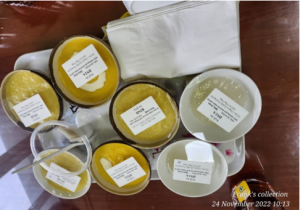TSURURINKO QUICKLY – A food thickener for dysphagia

1. History of Swallowing Foods in Japan
In Japan, we entered an aging society 50 years ago in the 1970s. Along with that, dysphagia was a social problem, especially for post-stroke patients. Dysphagia is a disorder in which there is a problem with delivering food to the stomach properly. When a person has difficulty swallowing, the inability to swallow properly can be the reason for not being able to eat, which can lead to malnutrition and dehydration. There is also the risk of food getting stuck in the throat and causing choking or aspiration pneumonia. As such, since the 1980s, hospitals and nursing homes in Japan have been providing meals for people with dysphagia and establishing standard meals for swallowing issues.
.

2. Release of Tsururinko Quickly of Morinaga Milk Group
Since the 1980s, “thickening” has become widespread as swallowing meals has developed. When the idea that thickening was a way to make food easier to swallow began to spread, potato starch and manioc flour, commonly used at home, were also used in medical facilities. Although potato starch and manioc flour are easy to buy, they have problems such as the need for heating, and are affected by amylase, an enzyme in saliva that causes the loss of their thickness. With that background, Morinaga Milk Industry developed Tsururinko Quickly, which is made mainly from xanthan gum, a polysaccharide thickener to solve such problems, and launched it in 2003. Currently being used in approximately 7,000 hospitals and nursing homes, it is the No. 1 selling product in the market of thickened food products. In 2020, this product was the first thickening-adjusted food in Japan to be approved as a special-purpose food for people with dysphagia. In 2021 we started importing and selling Tsururinko Quickly, for dysphagia from Japan,
3. To support “always” eating by mouth in Vietnam.
In Japan, until 20 years ago, patients with dysphagia who were unable to eat were generally fed by a tube through the nose—subsequently, rehabilitation to regain the ability to eat by mouth and swallow meals spread rapidly.
This great expansion was due to the strong desire of Japanese medical professionals to support patients with dysphagia to eat by mouth for as long as possible. Morinaga Milk Industry sympathizes with this desire and has been supporting this project as much as possible.
And we know that some medical staff of hospitals in Vietnam is now working daily to develop rehabilitation of dysphagia and nutritional management with the desire to ‘support “always” eating by mouth. We sympathize with their efforts and would like to support them to the furthest extent.

